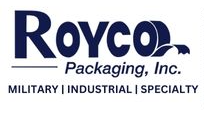A desiccant is a hygroscopic substance used to maintain an arid environment. It works in opposition to humectants, which encourage the preservation of moisture. Desiccants produce and maintain a moisture-free atmosphere by removing humidity from the air.
Electronics, clothing, cosmetics, medications, and vitamins, among a wide range of other goods, can all be harmed by moist, damp environments. Moisture fosters conditions that are vulnerable to bacterial growth, mold and fungi, and degradation. Corrosion and permanent harm are risks associated with moisture in electronics. Desiccants can be used to stop this harm from happening.

Desiccants are often used for packaging things that could get damaged by humidity and moisture. However, desiccants are also used in other places where dampness might be an issue. For example, insulating windows and soundproof glass are made by putting two or more pieces of glass together with a thin space in between. This space acts as an insulator. This gap may allow moisture to enter, which could lead to condensation, fogging, and blocked views. A small amount of desiccant is put between the two panes of glass to stop condensation and fogging. This absorbs moisture and humidity in the enclosed space.
What Are the Different Types of Desiccants?
Desiccant packets are frequently found in market goods, including vitamin bottles and shoe boxes. Desiccants are those tiny silica gel packets or little cylindrical canisters you see in the packaging. A wide variety of materials can be employed as a desiccant. Among the most popular desiccants are:
- Silica Gel
- Molecular Sieve
- Calcium Chloride
- Charcoal Sulfate
- Activated Charcoal,
- Activated Alumina
- Montmorillonite Clay
Different types of desiccants have different uses. For instance, activated charcoal can remove odors in addition to acting as a desiccant. If the packet comes into contact with substantial moisture, the moisture-indicating silica gel beads change color. Desiccants can also be used in breathers that function as filters to stop pollution.
It is crucial to use the proper desiccant for the suggested application. For instance, salt is a desiccant product, but when it comes into contact with metal, it causes corrosion. Therefore, it cannot be used to dry storage spaces for metal items.
Desiccants that have been specially blended can also be made to perform very particular tasks. Desiccants are used in a variety of industries, including production and others. You can get assistance from a packaging material supplier in choosing the ideal desiccant for your purpose.
How and Where Are Desiccants Used?
The desiccants function based on the idea of air moisture absorption. The weak acting forces between molecules are referred to as "adsorption." The contents of desiccant packs lure the thin layers of moisture molecules from the air toward it using the principle of multiple-layer adsorption. Some products use tiny pores that ultimately fill with water molecules to operate on the capillary condensation mechanism.
Due to the high proportion of humidity in the air, desiccant products are extremely useful in situations where the rate of evaporation is quite low. Because they remove excess moisture from the air to keep it dry and sanitary, desiccants are also known as dehumidifiers.
There are many uses for these dehumidifiers in both domestic and commercial settings. Here are a few significant applications for desiccants.
- Transportation of goods: When shipping goods, the packaging process relies heavily on widely available drying agents.
- Desiccants made of activated carbon: Carbon is valued for its ability to remove airborne impurities and leave behind a clean, fresh environment. One of the best things about using carbon desiccants is that it gets rid of bad odors in confined spaces like basements, garages, and storerooms.
- Natural desiccants: In addition to being used in commercial operations, desiccants are crucial for protecting household goods. For instance, due to moisture interaction, which frequently results in the creation of lumps or germs, spices, pulses, and other food items can go bad. A lot of people use rice as a natural preservative to keep food from deteriorating. The spices will last longer if you put some rice in the container with them because it will absorb moisture. Salt is a natural desiccant as well.
- Chemical preservation: When certain chemicals come into touch with moisture, they can create compounds. Therefore, non-reacting desiccants are used when storing chemicals.
Damage caused by moisture is responsible for annual losses totaling billions of dollars to the consumer goods industry. It has also been implicated as a contributing factor in plane wrecks and the malfunction of electronic and optical equipment used in a variety of technological fields. Desiccants are used to protect everything from stored household items to large-scale commercial equipment. To ensure that your products receive the best protection possible and serve their intended purpose, it is crucial to choose the appropriate type of desiccant, right from packaging to shipping and storing.

